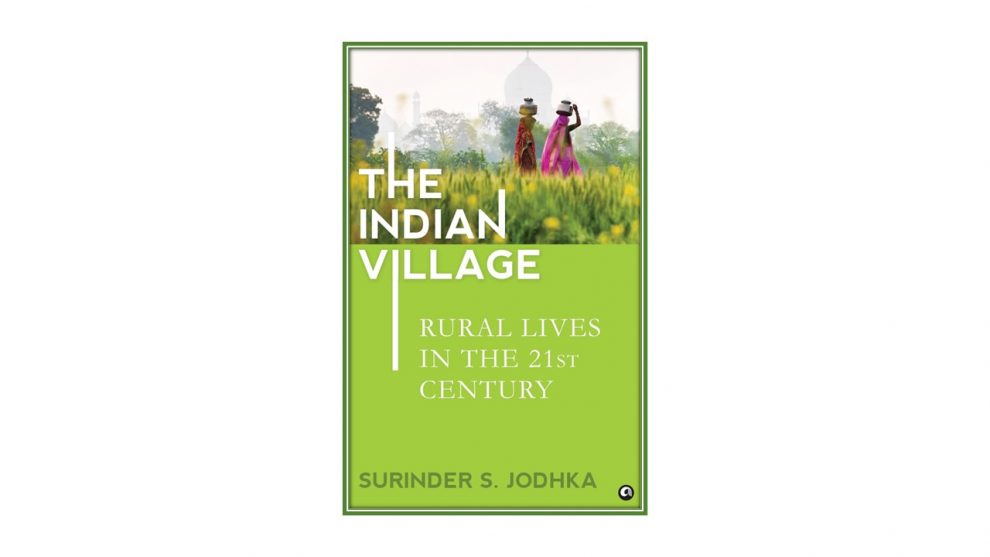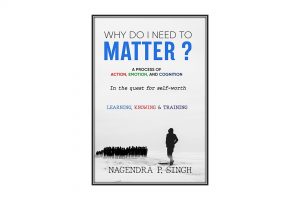Surinder S. Jodhka (2023)
Aleph Book Company
ISBN: 978-93-91047-19-1
279 pages
Price: INR 799
The word ‘village” often conjures up images of farmers working in lush green fields swaying in the wind, alongside a beautiful river or a canal, while their cattle are grazing nearby. Or, even a group of people returning home at dusk after a hard day’s toil under the sun. Of course, this imagery is often coloured by our own understanding and experience in Indian villages.
But what really is an Indian village? Eminent sociologist Dr. Surinder S. Jodhka answers this question in his recent book The Indian Village: Rural Lives in the 21st Century.
One occasionally hears people reminiscing about the village of yore and how it has changed. This is more so among those who are living in urban areas and whose parents migrated from villages to pursue livelihoods or among the upper or upper middle caste and/or class. The author believes that if these two instances do occur, there is a high likelihood that you might be holding on to a colonial/ Eurocentric understanding of the Indian village and not really know what a real Indian village is.
The Eurocentric vision of an Indian village is of one that is traditional, static, not prone to change, disconnected from the rest of the world, agrarian, backward, underdeveloped, and self-sustained. In British terms, Indian villages are “homogenous republics” that should be “developed” through external interventions; otherwise, they will stay unevolved. The author totally disputes this narrative by providing evidence from a historical, anthropological and sociological perspective. He walks us through how our colonial rulers aggravated the inequalities existing in villages by commercializing agriculture and making land rights transferable. He also explains how elite Indian nationalists used this (false) narrative of traditional homogenous republics in the freedom movement.
The author then goes on to describe how the idea that “villages should be developed”, adopted by independent India’s early administrators, turned out to be a failure due to their falacious assumptions and warped understanding of rural India. The author tries to disprove this dominant narrative through discussions on the evolution of India’s rural economy (agricultural, non-farm economy and migration), social order (Varna and Jajmani) and political changes (73rd Amendment, rise of Other Backward Castes (OBCs) in politics and the emergence of a new political group called “fixers” in rural areas) since independence.
The author strongly believes that becoming urban is not the destiny of Indian villages, and goes on to explain why, based on his extensive field work in villages in North India and by borrowing from several other studies in India. He goes on to conclude that the popular view of life in rural and urban settings being “binary opposites” of each other is fundamentally flawed.
Dwelling on the social life in Indian villages and its complexities, the author states that it is defined by inequalities across castes, class and gender, which also intersect with each other in a larger social, economic, geographical and political context. However, this complexity did not leave Indian villages unevolved; the villages always evolved along with the urban settlements. The author explains this journey of evolving over the post-independence period, especially how technological change brought in by the Green Revolution resulted in far reaching changes in caste relations and hierarchies, occupational structure, religiosity and gender relations. These changes were not restricted to villages in Punjab, Haryana and Western UP which benefitted most from the Green Revolution, but were also witnessed in villages in Eastern India from where a lot of men migrated as agricultural and industrial labour elsewhere.
The book also discusses the agrarian distress in many parts of the country due to increasing indebtedness of farmers and the associated suicides, the fragmentation of holdings, disappearing commons on which farmers depended to graze their cattle and the disenchantment with agriculture as a profession. The book could do with more in depth discussion on the role of labour laws, social welfare programmes and reservations (affirmative action) in education and employment in rural transformation.
As a young extension researcher, I found this book an eye-opener as it exposed sections of rural agricultural life and its economy, which my academics didn’t cover. This book answered many of my questions and led to more questions.
Overall, this interesting book provides multiple insights. To those interested in knowing rural India and those who work with rural communities, like social workers, extension service providers and development professionals, the book will enhance their work performance. To students of agriculture (mostly those pursuing masters in agricultural extension and economics), the book is a valuable resource that throws light on the changing nature of Indian villages. For social science research scholars and scientists, the book gives deep insights into the multifaceted nature of rural India and relevant research ideas for the future.
D. Alagu Niranjan
 D. Alagu Niranjan, recently completed his PhD in Agricultural Extension Education from the ICAR-National Dairy Research Institute (NDRI), Karnal, India and is a Research Fellow with the Centre for Research on Innovation and Science Policy (CRISP), Hyderabad, India. He can be reached at: dan131995@gmail.com
D. Alagu Niranjan, recently completed his PhD in Agricultural Extension Education from the ICAR-National Dairy Research Institute (NDRI), Karnal, India and is a Research Fellow with the Centre for Research on Innovation and Science Policy (CRISP), Hyderabad, India. He can be reached at: dan131995@gmail.com





Enjoyed reading an excellent Book review. The reviewer is highly successful in arousing the interest of target audience to the rich, multiple insights of the Book to prompt them to read the Book for enriching their knowledge on changing rural life for better interpretations and performance in field work and social science research. He confidently promises that the Book is an eye opener to hitherto unexplored truths of changing rural life and readers will get new narratives against the popular, conventional, dogmatic and dominant views to upgrade their performance in doing field work and relevant research for development . Congratulations to the author and AESA for sharing the information on the publication and its good review.